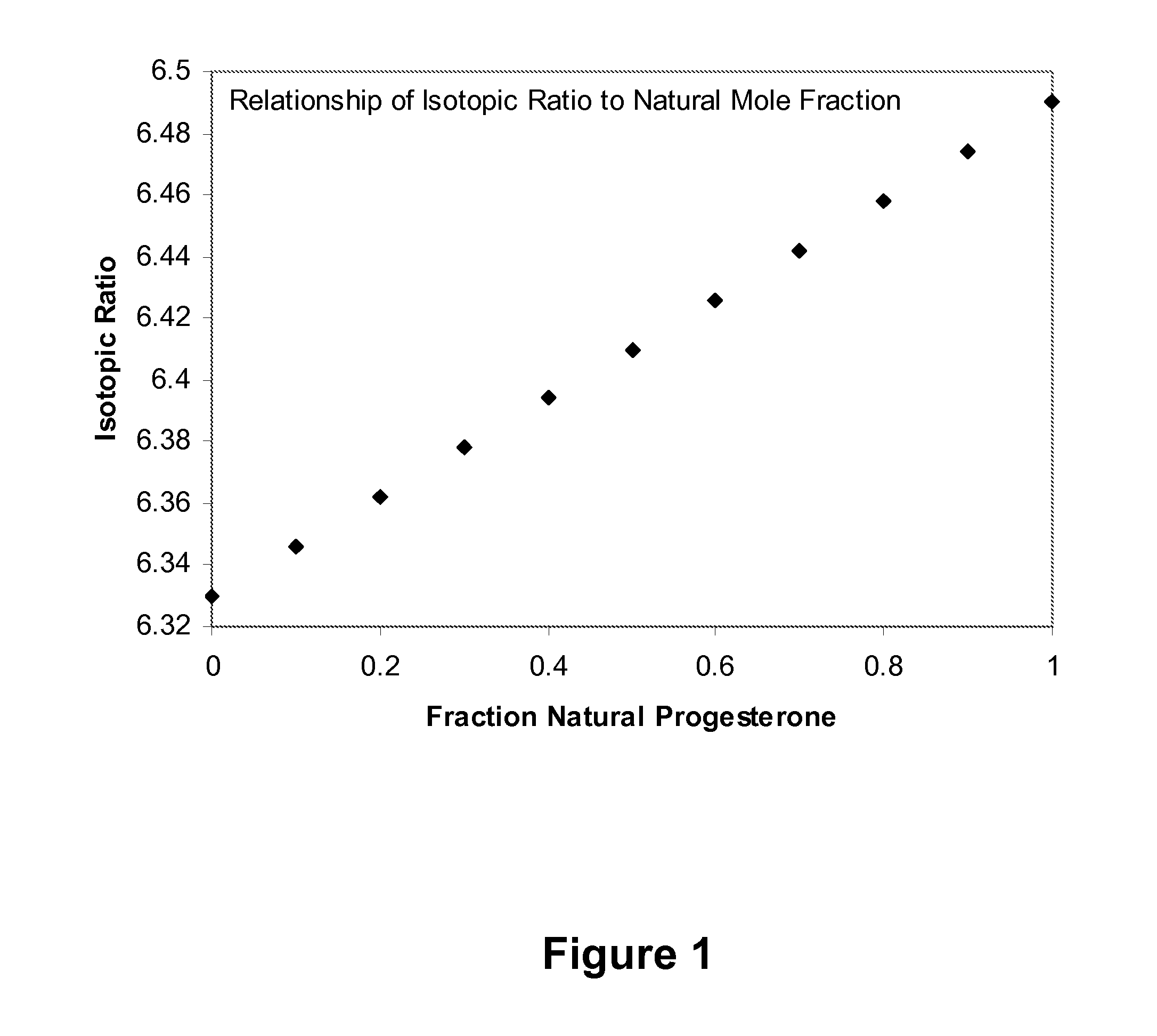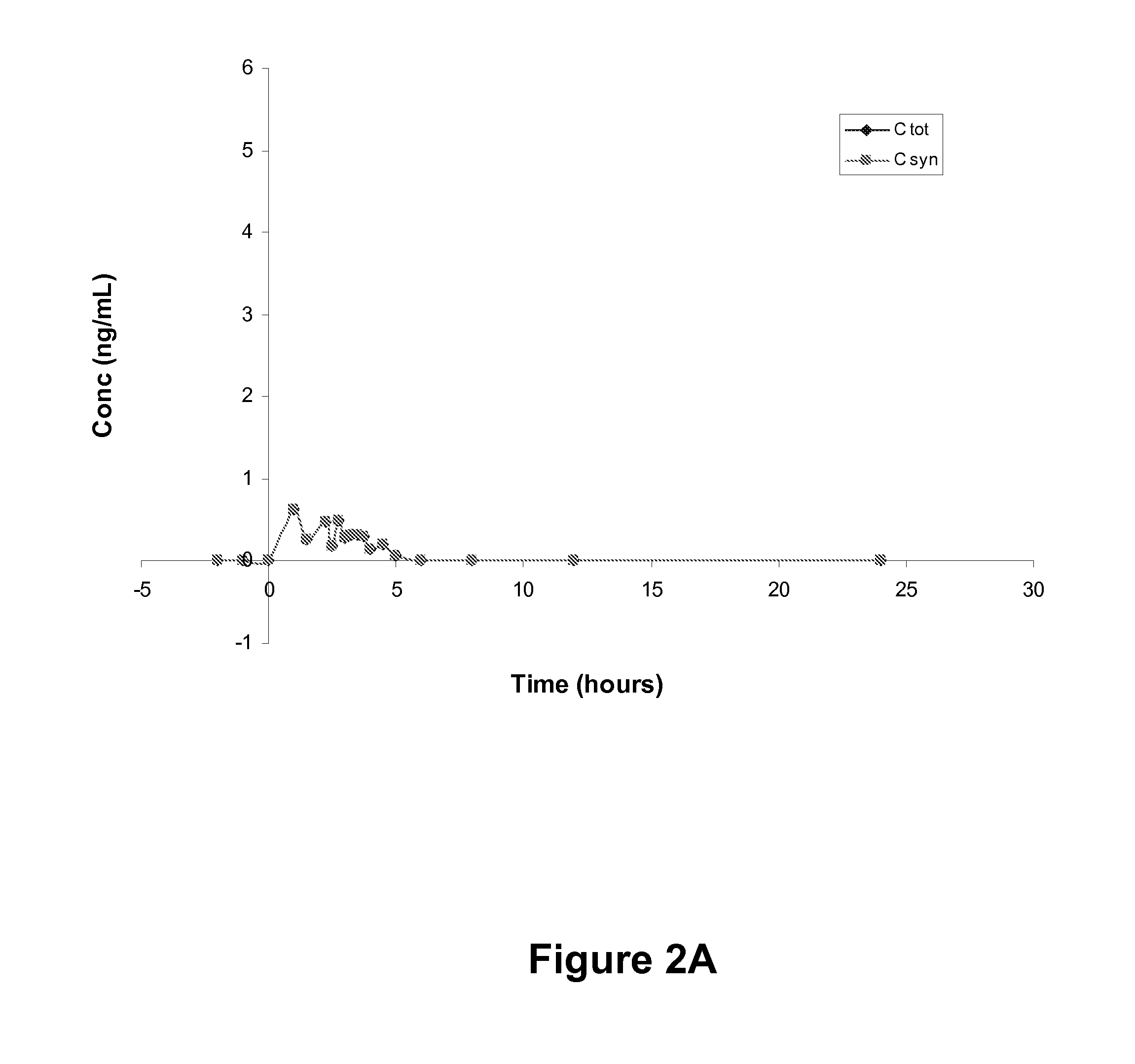Analytical Methods for Measuring Synthetic Progesterone
a synthetic progesterone and analytical method technology, applied in the field of analytical methods for measuring synthetic progesterone, can solve the problems of limited increased variability of measured pharmacokinetic parameters, and difficult analysis of progesterone pharmacokinetics, so as to limit the advancement and approval of therapeutic products and advance in understanding
- Summary
- Abstract
- Description
- Claims
- Application Information
AI Technical Summary
Benefits of technology
Problems solved by technology
Method used
Image
Examples
example 1
General Analytical Methodology
[0060]A definitive low-level LC / MS / MS analytical method to determine the concentrations of synthetic progesterone in human plasma is described. Instrumentation used in this example includes an Applied Biosystems Q-Trap 4000 system using Analyst® 1.4.2 software, Shimadzu LC-20AD HPLC pumps and a LEAP HTC PAL Autosampler. As understood by a person skilled in the art, various similar or equivalent pieces of instrumentation can be used to perform this method. It is also recognized that improved instrumentation can be introduced utilizing equivalent or similar principles of analysis to perform this method similarly or better by being faster, more sensitive, more accurate or more robust relative to the instrumentation used herein.
[0061]One skilled in the art will acknowledge that the following instrument parameters (Table 1), while nominally optimized for the method, will function equivalently well when varied, such as a variation up to 50%, with some paramet...
example 2
Isotope Ratio (12C / 13C) of Progesterone to Determine Synthetic Progesterone Levels
[0079]Synthetic and natural progesterone have different 13C to 12C isotope ratios. Synthetic progesterone made from yam extract has a lower 12C / 13C ratio. A LC / MS / MS method provides a quantitative measure of either or both synthetic and endogenous progesterone in a sample potentially containing both components by measuring the carbon isotope ratio and comparing it against a carbon isotope ratio curve, such as one similar to that provided in FIG. 1 or from an equation obtained from standards containing known fractions of synthetic / natural progesterone.
[0080]Subjects are provided with progesterone soft gel cap (Prometrium®). An analytical methodology, as outlined in Example 1, is capable of distinguishing between endogenous (e.g., “natural”) progesterone from synthetic (e.g., administered) progesterone. Such an analytic technique can be used to reduce patient to patient variability in detected progestero...
example 3
Pharmacokinetic (PK) Analysis
[0083]In this example, healthy, fasted, post-menopausal women orally ingest 1×200 mg progesterone. Plasma samples are obtained from 2 h pre-dose to 24 h post-dose. Analytes include total progesterone and synthetic progesterone, with a limit of quantification (LOQ) of 0.1 ng / mL. LOQ may be further reduced by varying one or more system parameters, such as to achieve an LOQ that is 0.01 ng / mL or better.
[0084]RESULTS: Six subjects are enrolled, received the test article and provided plasma samples for analysis. Total progesterone and synthetic progesterone concentrations are measured and reported in four subjects, with a quantifiable bioassay signal not being reported in the other two subjects. Pharmacokinetic parameters are determined in the four subjects with complete data sets using non-compartmental analysis. Parameters are determined from individual plasma concentration versus time data for total progesterone, synthetic progesterone and endogenous proge...
PUM
 Login to View More
Login to View More Abstract
Description
Claims
Application Information
 Login to View More
Login to View More - R&D
- Intellectual Property
- Life Sciences
- Materials
- Tech Scout
- Unparalleled Data Quality
- Higher Quality Content
- 60% Fewer Hallucinations
Browse by: Latest US Patents, China's latest patents, Technical Efficacy Thesaurus, Application Domain, Technology Topic, Popular Technical Reports.
© 2025 PatSnap. All rights reserved.Legal|Privacy policy|Modern Slavery Act Transparency Statement|Sitemap|About US| Contact US: help@patsnap.com



